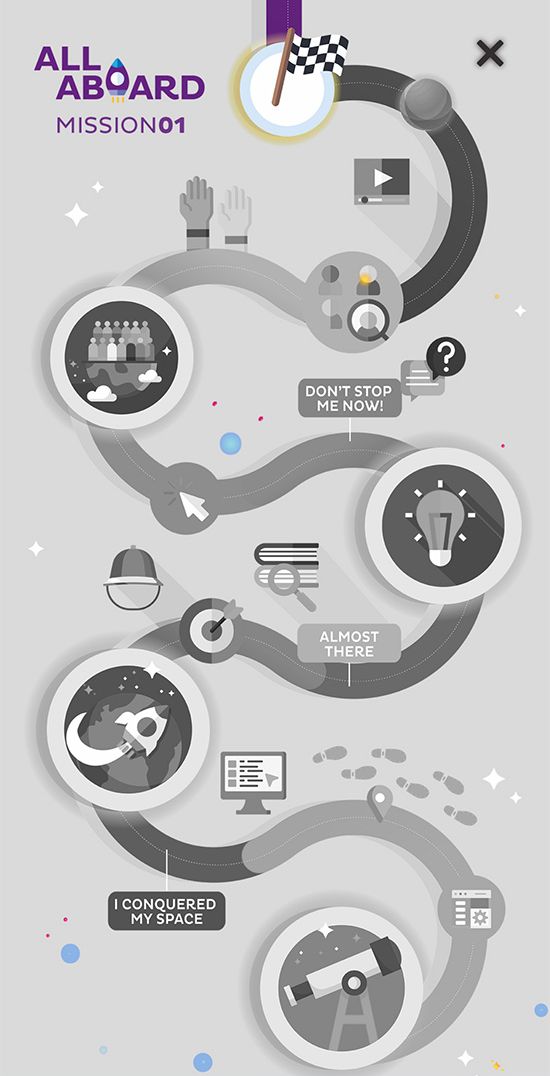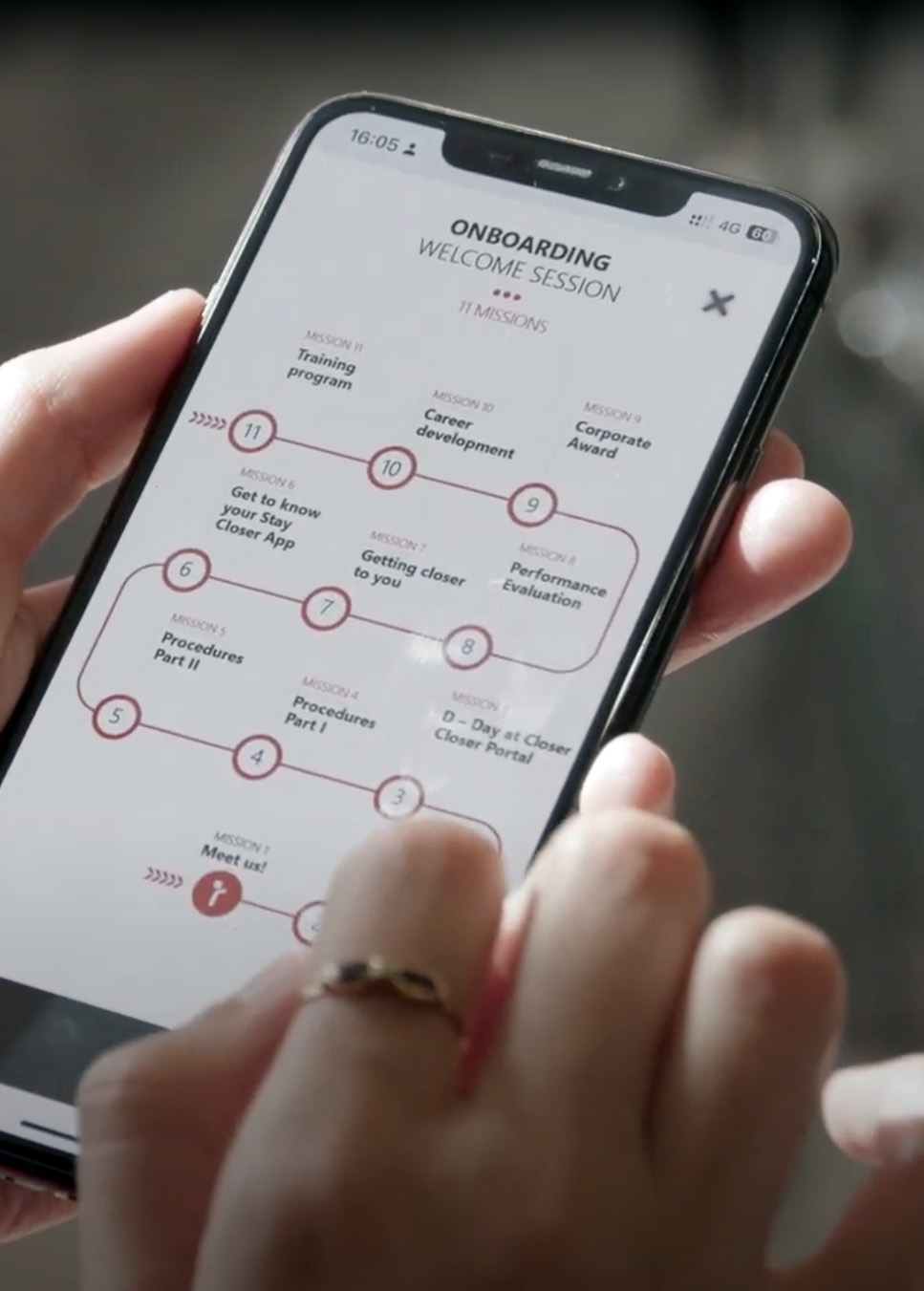Introduction to Remote Onboarding
What is Remote Onboarding?
Remote onboarding is the process of integrating new employees into a company when working remotely. Unlike traditional onboarding, which requires physical presence, remote onboarding utilizes digital tools and platforms to ensure that new hires have the resources, information, and connections they need to succeed. This includes orientation, training, and continuous support. More details can be found on SHRM’s guide to onboarding remote employees.
Remote Onboarding Meaning
The term “remote onboarding” refers to the adaptation of traditional onboarding practices to a virtual environment. It’s not merely a digital version of the old process but a rethinking of onboarding to suit the needs of remote work. This includes leveraging technology to create engaging experiences, fostering connections, and ensuring that new hires feel part of the team, even from a distance. Harvard Business Review offers insights into managing remote workers, including onboarding.
Importance of Digital Onboarding
Digital onboarding is more than a convenience; it’s a necessity in today’s global and remote work landscape. The importance of digital onboarding lies in its ability to:
- Streamline the onboarding process, making it more efficient
- Provide accessibility to resources and support regardless of location
- Enhance engagement through interactive and personalized experiences
- Integrate with existing systems for seamless operations
According to a study by Gallup, remote work has been on the rise, and effective digital onboarding is key to ensuring that remote employees are productive and engaged from day one.
The Remote Onboarding Process
Planning
Planning is the foundation of a successful remote onboarding process. It involves defining clear goals, selecting the right tools, and creating a comprehensive schedule. Here’s how to approach each step:
Define Goals
Setting clear and measurable goals is essential for a successful onboarding process. Goals should align with the company’s values, culture, and expectations. They provide direction and purpose, ensuring that both the new hire and the organization are on the same page. Some common onboarding goals might include:
- Understanding company culture and values
- Building relationships with team members
- Learning essential job skills and responsibilities
More insights on goal setting can be found in this Forbes article on onboarding process tips.
Select Your Remote Onboarding Tool
Selecting the right remote onboarding tools is crucial for a smooth and engaging experience. Tools should be user-friendly, customizable, and capable of integrating with existing systems.
When it comes to selecting the right tools for remote onboarding, the GFoundry platform stands out as a robust and innovative solution. With its unique approach to pre-onboarding and onboarding, GFoundry leverages gamification techniques and digital journeys to enhance employee motivation, retention, and engagement.
 GFoundry’s Pre-Onboarding & Onboarding Solution: Simple, Powerful, and Fun!
GFoundry’s Pre-Onboarding & Onboarding Solution: Simple, Powerful, and Fun!
The GFoundry platform offers an exciting digital suite with several modules tailored to your onboarding and engagement needs. Here’s why GFoundry is the go-to solution for remote onboarding:
- Statistics & Reports: Gain insights into your onboarding process with comprehensive statistics and engagement indicators.
- Content and Task Segmentation: Customize the onboarding experience based on employee, team, or department.
- Integration with External Content & Software: Seamlessly integrate with other tools and platforms for a cohesive experience.
- Unlimited Journeys: Create as many onboarding journeys as needed, tailored to individual employees or groups.
- Notifications and Reminders: Keep employees on track with personalized notifications and reminders.
Create a Path That Feeds Your Needs!
GFoundry’s Digital Journeys feature allows you to create structured paths with visual frames, quizzes, tasks, goals, and more. Whether it’s a company tour video, a “who-is-who” quiz, or professional goal setting, GFoundry provides the tools to make onboarding interactive and meaningful.
Gamify All Your Onboarding Strategy
With GFoundry’s Gamification Engine, you can create game and reward dynamics that make onboarding paths more interactive and engaging. From submission of employment contracts to defining personal development plans, GFoundry makes the process agile and straightforward.
Learn more about GFoundry’s onboarding solutions and discover how you can transform your remote onboarding process today!
Create a Schedule
Creating a well-structured schedule ensures that the onboarding process is organized and efficient. It helps in setting expectations and keeping everyone on track. A schedule should include:
- Orientation sessions
- Training modules and deadlines
- Meetings with team members and mentors
- Regular check-ins and feedback sessions
This CIO article offers top IT remote onboarding tips, including scheduling advice.
 Remote Onboarding Checklist
Remote Onboarding Checklist
Pre-Onboarding
Pre-onboarding is the stage before the new hire’s official start date. It sets the tone for the entire onboarding experience. Here’s what to include:
- Send a welcome email with essential information
- Provide necessary equipment and access to tools
- Share company culture, values, and expectations
For more details on pre-onboarding, refer to this guide by HR Technologist.
First Day
The first day is crucial in making a positive impression. Here’s a checklist for a successful first day:
- Conduct a virtual tour of the office
- Introduce the new hire to team members
- Assign a mentor or buddy
- Provide access to training materials
For insights on making the first day memorable, check out this article by Inc..
First Week
The first week sets the pace for the new hire’s integration into the team. Here’s what to focus on:
- Set clear expectations and goals
- Provide training materials and resources
- Schedule regular check-ins with the manager
- Encourage social interactions with the team
For more on the first week’s onboarding, see this article by The Balance Careers.
Ongoing Support
Ongoing support ensures that the new hire continues to feel engaged and supported. Here’s what to include:
- Continuous learning opportunities
- Regular feedback and performance reviews
- Community engagement and team-building activities
- Access to resources for career development
For strategies on providing ongoing support, refer to this guide by Gallup.
Onboarding Remote Employees
Challenges
Onboarding remote employees presents unique challenges that require thoughtful solutions. Some common challenges include:
- Communication Barriers: Lack of face-to-face interaction can lead to misunderstandings.
- Technology Issues: Technical difficulties can hinder the onboarding process.
- Building Company Culture: Fostering a sense of belonging remotely can be complex.
- Compliance and Security: Ensuring legal compliance and data security in remote settings.
For a deeper understanding of these challenges, read this article by HR Exchange Network.
Best Practices
Despite the challenges, successful remote onboarding is achievable by following best practices such as:
- Utilizing the Right Tools: Selecting user-friendly and secure onboarding platforms.
- Clear Communication: Regular updates and transparent communication.
- Personalized Experience: Tailoring the onboarding process to individual needs.
- Mentorship Programs: Assigning mentors to guide new hires.
Case Studies
Real-world examples provide valuable insights into effective remote onboarding. Here are some case studies:
 Natixis: Transforming Onboarding Through Gamification
Natixis: Transforming Onboarding Through Gamification
Natixis, a Center of Excellence in Portugal and part of Groupe BPCE, the second-largest French bank, faced a significant challenge with its onboarding process. With exponential growth and hundreds of new hires every month, the company needed to enhance its onboarding process, particularly during the pandemic when in-person onboarding became impossible.
GFoundry was chosen to implement the “All Aboard” gamified solution, transforming traditional banking and developing innovative business solutions. The solution focused on three key onboarding phases: pre-boarding, integration, and training.
- Pre-Boarding: A strategic opportunity to alleviate newcomers’ fears, making them feel welcome and valued, thus reducing the risk of early departure.
- Integration: Rapid learning of organizational culture combined with game dynamics, ensuring a smooth transition into the company.
- Training: A critical area where GFoundry’s solution added value, offering a hybrid or 100% digital format for impactful learning and integration.
The GFoundry solution allowed Natixis to adapt to the virtual world, providing a digital solution based on gamification to boost engagement and performance. The initiative prioritized not only the actual integration of new employees but also the pre-boarding phase, marked by instability and the risk of employee abandonment.
João Carvalho, Co-Founder & CEO of GFoundry, emphasized the importance of the pre-onboarding phase and how gamification techniques can be easily applied to any part of the onboarding process. The solution provided by GFoundry ensured an impactful learning and integration experience for all employees, whether in a hybrid or 100% digital format.
Learn more about how Natixis leveraged the power of gamification in their onboarding process and the role of GFoundry in this transformation. Read more.
 Closer Consulting: Performance Evaluation, Onboarding, Learning & Talent Management
Closer Consulting: Performance Evaluation, Onboarding, Learning & Talent Management
Founded in 2006, Closer Consulting is a Portuguese company specializing in Data Science and Artificial Intelligence. With a presence in 14 countries and about 370 employees, Closer sought to professionalize communication with its employees and strengthen their collective commitment. The choice fell on GFoundry, leading to the creation of the “Stay Closer” platform, customized to Closer’s specific interests.
Performance Evaluation
The Stay Closer platform allows for frequent and dynamic evaluations, with quarterly sessions and mini-contracts between employees and managers. The platform supports the entire assessment operation, providing flexibility and interconnection between evaluations and individual career and training plans. Know more about Performance GFoundry’s Evaluation Solutions here.
Training
Constant learning is a fundamental pillar for Closer, and the Stay Closer platform defines, records, and implements personalized training paths. The platform provides an interactive approach, using learning missions and gamification, allowing the entire talent management to be concentrated in a virtual space. Know more about GFoundry’s eLearning and Training here.
Onboarding
The GFoundry platform was decisive in Closer’s onboarding process, especially during the pandemic. It gamifies the entire onboarding process, supporting it through quizzes and missions. The platform created a fun way to help new hires get to know the company. Know more about GFoundry’s Onboarding Solutions here.
 The Thermometer that Measures Satisfaction
The Thermometer that Measures Satisfaction
Stay Closer also includes an “Engagement Thermometer” to measure employees’ feelings towards the company. This anonymous monthly survey helps gauge the organizational climate, reflecting Closer’s commitment to fostering proximity in various dimensions.
In summary, the collaboration between Closer Consulting and GFoundry led to the creation of a comprehensive platform that addresses performance evaluation, training, onboarding, and employee satisfaction. The Stay Closer platform has become central to Closer’s talent management, reflecting the company’s innovative and engaging approach. Read more.
 What is NOT a Benefit of Digital Onboarding?
What is NOT a Benefit of Digital Onboarding?
Common Misconceptions
Digital onboarding has revolutionized the way companies integrate new hires, but there are also misconceptions about what it can and cannot achieve. Understanding these misconceptions helps in setting realistic expectations and optimizing the process. Here are some common misconceptions:
- Complete Automation: While digital onboarding can automate many tasks, it doesn’t replace human interaction. Personal connections and mentorship remain vital.
- One-Size-Fits-All: Digital onboarding must be tailored to individual roles and needs. A generic approach may not address specific job requirements or company culture.
- Instant Productivity: While digital onboarding can accelerate the learning curve, expecting immediate full productivity can lead to frustration. A gradual approach with clear milestones is more effective.
- Cost-Effectiveness Equals Cost-Cutting: While digital onboarding can be cost-effective, skimping on essential resources or support can lead to a poor onboarding experience.
Understanding what digital onboarding is not helps in creating a more effective and engaging experience. By avoiding these common misconceptions, companies can build a remote onboarding process that truly empowers new hires and aligns with organizational goals.
 Remote Onboarding Tools and Software
Remote Onboarding Tools and Software
Remote Onboarding with GFoundry Platform
The GFoundry platform is a versatile tool designed to solve business challenges by engaging employees through gamification, AI, and social features. Here’s how it can be utilized for remote onboarding:
- Customizable Journeys: Create structured paths to guide employees through onboarding, setting milestones, and rewarding achievements.
- Multi-Lingual Support: Reach a global workforce with content in various languages.
- Engagement Thermometer: Measure happiness and well-being within the organization.
- Integration with Other Platforms: Seamlessly connect with ERP, business intelligence platforms, communication apps, and more.
Learn more about the GFoundry platform and its features on the official website.
Integration with Existing Systems
Integration with existing systems is crucial for a smooth remote onboarding process. Here’s why:
- Data Consistency: Ensures that information is consistent across various platforms.
- Streamlined Processes: Reduces manual data entry and potential errors.
- Enhanced User Experience: Provides a unified experience for new hires, with access to all necessary tools in one place.
For example, GFoundry’s platform can be integrated with existing ERP, business intelligence platforms, communication, and chat apps to import or export data, creating a seamless onboarding experience.
| Integration Type | Examples |
|---|---|
| ERP Systems | SAP, Oracle |
| Communication Apps | Slack, Microsoft Teams |
| Business Intelligence Platforms | Tableau, Power BI |
Integration not only enhances efficiency but also ensures that the onboarding process aligns with the overall business strategy.
Onboarding Checklist for Multiple Job Functions
This table provides a comprehensive onboarding checklist for different job functions within a company. It outlines the essential tasks and activities that new employees should complete during their onboarding process.
From executive management to health and safety, each section is tailored to the specific needs and responsibilities of the role. By following this checklist, companies can ensure a smooth and effective onboarding experience, helping new hires integrate quickly and successfully into their new positions.
| Job Function | Examples of Onboarding Tasks |
|---|---|
| Executive and Senior Management |
|
| Human Resources |
|
| Finance and Accounting |
|
| Sales and Marketing |
|
| Information Technology |
|
| Operations and Supply Chain |
|
| Customer Service |
|
| Research and Development |
|
| Legal and Compliance |
|
| Manufacturing and Production |
|
| Administrative |
|
| Health and Safety |
|
 Answers to Some of the Most Frequent Questions Related to Onboarding
Answers to Some of the Most Frequent Questions Related to Onboarding
In this section, we address some of the most commonly asked questions about the onboarding process. Whether you’re an HR professional, a manager, or a new employee, these insights can help you understand the essentials of effective onboarding.
What is HR Onboarding Process?
The HR onboarding process involves integrating new employees into the organization and providing them with the necessary tools, information, and orientations. It often includes paperwork, training, and introductions.
What is the Onboarding Life Cycle?
The onboarding life cycle refers to the various stages a new employee goes through, from pre-boarding to full integration. It aims to improve employee retention, engagement, and productivity.
What is the Biggest Challenge on Onboarding?
The biggest challenge often lies in effectively engaging new hires. This is especially challenging when onboarding remote employees, where building relationships can be difficult.
What are the Most Common Mistakes During the Onboarding Process?
Common mistakes include lack of clear communication, insufficient training, and not setting clear expectations. These can lead to disengagement and high turnover.
20 Examples of Common Mistakes During the Onboarding Process:
- Inaccurate Job Descriptions
- Lack of Pre-Boarding Activities
- Ignoring Employee Feedback
- Offering Subpar Orientation Material
- Failing to Set Clear Goals and Expectations
- Not Explaining Onboarding Software Features
- Overwhelming New Hires with Information
- Inadequate Training Programs
- No Introduction to Company Culture
- Lack of Ongoing Support
- Ignoring Compliance and Legal Requirements
- Failing to Assign a Mentor or Buddy
- Not Measuring Onboarding Effectiveness
- Lack of Personalization in the Onboarding Process
- Neglecting Remote Employees in Onboarding
- Poor Communication Throughout the Process
- Not Providing Necessary Tools and Resources
- Failing to Update Onboarding Material
- Ignoring Team Integration Activities
- No Follow-Up or Check-Ins After Onboarding
How Do I Prepare My Employees for Remote Onboarding?
Preparation involves setting up technology, sending out necessary materials in advance, and scheduling virtual meet-and-greets. Clear communication is key.
What are the 4 C’s of an Effective and Successful Onboarding Program?
The four C’s of onboarding are Compliance, Clarification, Culture, and Connection. These elements help new hires understand their roles, the company’s policies, and how to integrate into the company culture.
How Do You Effectively Onboard Remote Employees?
Effective remote onboarding involves clear communication, setting up necessary technology, and virtual team introductions. Regular check-ins and virtual training sessions are also crucial.
What are the 3 Most Important Elements of Successful Onboarding?
The three most important elements are Orientation, Training, and Feedback. These help new hires understand their roles, learn necessary skills, and improve through constructive feedback.
What are the 4 Phases of Employee Onboarding?
The 4 phases of employee onboarding typically include: Pre-boarding, Orientation, Role-specific training, and Ongoing support. Each phase has its own set of activities and goals aimed at helping new hires integrate successfully.
How Do I Onboard New Hires Virtually?
Virtual onboarding involves leveraging digital tools for orientation, training, and paperwork. It also includes virtual meet-and-greets and regular online check-ins to ensure the new hire is settling in well. You can use GFoundry onboarding solution. Check here to know more.
What are the Critical Steps of Onboarding?
Critical steps on Onboarding include: Paperwork completion, Orientation, Role-specific training, and Setting performance expectations. Skipping any of these steps can lead to an ineffective onboarding process.
What Should be Included in Virtual Onboarding?
Virtual onboarding should include Digital forms for Paperwork, Virtual tours of the company, Online training modules, and Virtual meet-and-greets with team members.
What Should be in an Onboarding Checklist?
An onboarding checklist should include tasks related to paperwork, training, equipment setup, and introductions to team members. It serves as a roadmap for both HR and the new hire.
What are at Least 3 Important Onboarding Success Metrics?
Key metrics include Time-to-productivity, New hire retention rates, and Employee satisfaction scores. These metrics help evaluate the effectiveness of your onboarding process.
What Makes a Strong Onboarding Process?
A strong onboarding process is comprehensive, engaging, and tailored to individual needs. It not only focuses on tasks but also on integrating the new hire into the company culture.
What are Onboarding Strategies?
Onboarding strategies refer to the planned activities and programs designed to integrate new hires into the organization. This can range from mentorship programs to specialized training modules.
What is Perfect Onboarding?
Perfect onboarding is a seamless process that ensures new hires are productive, engaged, and have all the tools they need to succeed from day one. It’s tailored to meet individual needs and aligns with company goals.
What is the Most Important Step in the Onboarding Process?
The most important step is arguably setting clear expectations. This provides a foundation for everything else in the onboarding process, from training to performance evaluations.
How Do You Create an Onboarding Guide?
An onboarding guide is created by outlining all the steps, from pre-boarding to full integration, and including all necessary resources and timelines. It serves as a manual for new hires.
Why is Onboarding So Hard?
Onboarding is challenging because it involves various elements like compliance, training, and cultural assimilation, all within a short timeframe. Mistakes can lead to high turnover and low engagement.
How Can I Make My Onboarding Better?
To improve onboarding, focus on clear communication, comprehensive training, and regular feedback. Utilizing digital tools can also streamline the process and make it more engaging. You can use GFoundry onboarding solution. Check here to know more.
 Conclusion
Conclusion
Summary
The rise of remote work has made remote onboarding an essential aspect of modern business operations. From understanding what remote onboarding entails to recognizing common misconceptions, selecting the right tools, and integrating them with existing systems, a comprehensive approach is key. Platforms like GFoundry offer versatile solutions that can be tailored to various organizational needs, ensuring a seamless and engaging onboarding experience. The process involves careful planning, execution, and ongoing support, with a focus on clear communication, personalization, and engagement.
Future Trends
As remote work continues to evolve, so will the trends in remote onboarding. Here are some future trends to watch:
- Increased Personalization: Tailoring onboarding experiences to individual needs and roles will become even more critical.
- AI and Automation: Leveraging AI to automate tasks and provide insights will enhance efficiency. More on AI in HR can be found in this article.
- Focus on Well-Being: Tools to measure and support employee well-being will gain prominence, reflecting a broader trend in employee engagement. Read this article to know more.
- Integration and Interoperability: Seamless integration with various business tools and platforms will be essential for a unified experience.
- Compliance and Security: Ensuring legal compliance and data security in remote settings will remain a priority.
Staying ahead of these trends will enable organizations to create an onboarding process that not only meets current needs but also adapts to future changes.
Remote onboarding is more than a trend; it’s a strategic approach that aligns with the evolving nature of work. By understanding its complexities and leveraging the right tools and practices, businesses can create an engaging and effective onboarding experience that empowers remote employees to succeed.
Subscribe to GFoundry Newsletter: Weekly Insights on HR’s Most Pressing Topics
Keep on reading:
- Transforming Onboarding into an Unforgettable Experience
- Employee Onboarding Journey Maps Examples
- How to create Impactful Learning Journeys for Employees?
- A Comprehensive Guide to the Impact, Benefits, and Future of Artificial Intelligence in HR
- Carglass | Go Inside – a complete Talent Management solution with Gamification
- The Ultimate Guide to Remote Talent Management
- SOMA (Leroy Merlin): a complete solution for talent management
- Benefits of a Good Organizational Climate: Productivity and Talent Retention
Ready to get started?
Take the next step and learn more about how GFoundry can help you.


 GFoundry’s Pre-Onboarding & Onboarding Solution: Simple, Powerful, and Fun!
GFoundry’s Pre-Onboarding & Onboarding Solution: Simple, Powerful, and Fun! Remote Onboarding Checklist
Remote Onboarding Checklist Natixis: Transforming Onboarding Through Gamification
Natixis: Transforming Onboarding Through Gamification Closer Consulting: Performance Evaluation, Onboarding, Learning & Talent Management
Closer Consulting: Performance Evaluation, Onboarding, Learning & Talent Management The Thermometer that Measures Satisfaction
The Thermometer that Measures Satisfaction What is NOT a Benefit of Digital Onboarding?
What is NOT a Benefit of Digital Onboarding? Remote Onboarding Tools and Software
Remote Onboarding Tools and Software Answers to Some of the Most Frequent Questions Related to Onboarding
Answers to Some of the Most Frequent Questions Related to Onboarding Conclusion
Conclusion